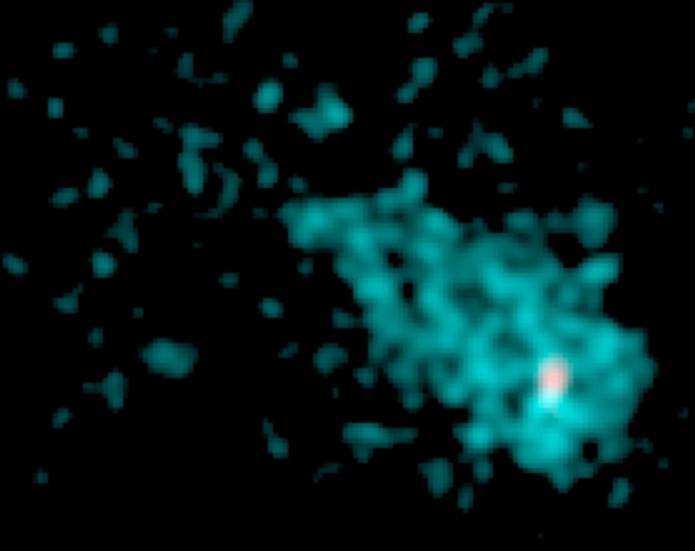
 Credit: NASA/NCSSM/C. Olbert et al.
Credit: NASA/NCSSM/C. Olbert et al.
High School Confidential: Stellar Corpse Found
Supernova remnants are shrouds of gas thrown into space by an explosions of
a star. In some cases the stars are blown apart completely, but in other
cases the dense core of the star remains. Discovering such a stellar
"corpse" provides astronomers with important information about the
supernova explosion (like whether the explosion happens equally in all
directions), so astronomers spend a great deal of effort trying to identify
the dead stars within the remnant shrouds. In general this search can be
difficult, since the stellar corpses are extremely small (typically less
than 20 kilometers in diameter) and therefore are hard to detect. But these
dead stars may be extremely hot and may be strong X-ray sources, so X-ray
satellites like the Chandra X-ray
observatory can provide the best means of finding them. Recently
three high school students (Charles Olbert, Christopher Clearfield, and
Nikolas Williams, from the North Carolina School for Science and
Mathematics in Durham, NC), used data from NASA's Chandra X-ray Observatory
and the National Science Foundation's Very Large Array (VLA), to find the
first
evidence of a neutron star in the nearby supernova remnant IC443, a
system long studied by professional astronomers. These students obtained
an image of IC 443 with the ACIS
camera on Chandra. The ACIS image (above) showed a bright point of
X-radiation (seen as the white dot in the image above) which appears to be
surrounded by a "trailing wake" of hot x-ray emitting gas (the bluish haze
in the picture above). The shape of the wake allowed the students to
estimate the speed of the neutron star, and by measuring the distance of
the neutron star from the center of the remnant, the students were able to
show that the star exploded about 25,000 years ago.
Last Week *
HEA Dictionary * Archive
* Search HEAPOW
* Education
Each week the HEASARC
brings you new, exciting and beautiful images from X-ray and Gamma ray
astronomy. Check back each week and be sure to check out the HEAPOW archive!
Page Author: Dr. Michael F.
Corcoran
Last modified January 7, 2001


